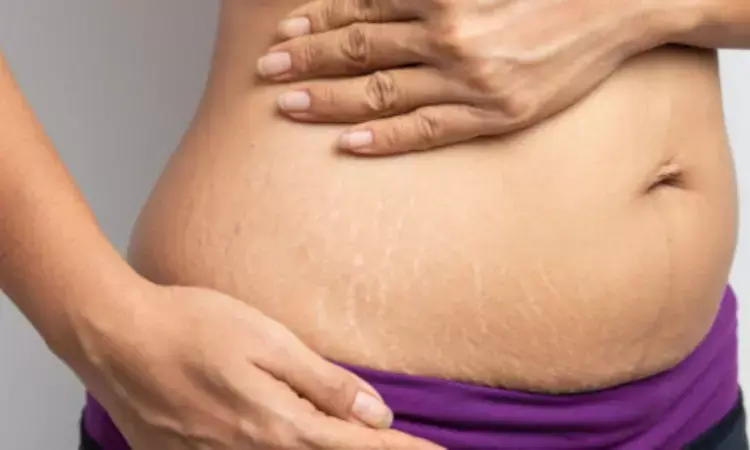- Home
- Medical news & Guidelines
- Anesthesiology
- Cardiology and CTVS
- Critical Care
- Dentistry
- Dermatology
- Diabetes and Endocrinology
- ENT
- Gastroenterology
- Medicine
- Nephrology
- Neurology
- Obstretics-Gynaecology
- Oncology
- Ophthalmology
- Orthopaedics
- Pediatrics-Neonatology
- Psychiatry
- Pulmonology
- Radiology
- Surgery
- Urology
- Laboratory Medicine
- Diet
- Nursing
- Paramedical
- Physiotherapy
- Health news
- Fact Check
- Bone Health Fact Check
- Brain Health Fact Check
- Cancer Related Fact Check
- Child Care Fact Check
- Dental and oral health fact check
- Diabetes and metabolic health fact check
- Diet and Nutrition Fact Check
- Eye and ENT Care Fact Check
- Fitness fact check
- Gut health fact check
- Heart health fact check
- Kidney health fact check
- Medical education fact check
- Men's health fact check
- Respiratory fact check
- Skin and hair care fact check
- Vaccine and Immunization fact check
- Women's health fact check
- AYUSH
- State News
- Andaman and Nicobar Islands
- Andhra Pradesh
- Arunachal Pradesh
- Assam
- Bihar
- Chandigarh
- Chattisgarh
- Dadra and Nagar Haveli
- Daman and Diu
- Delhi
- Goa
- Gujarat
- Haryana
- Himachal Pradesh
- Jammu & Kashmir
- Jharkhand
- Karnataka
- Kerala
- Ladakh
- Lakshadweep
- Madhya Pradesh
- Maharashtra
- Manipur
- Meghalaya
- Mizoram
- Nagaland
- Odisha
- Puducherry
- Punjab
- Rajasthan
- Sikkim
- Tamil Nadu
- Telangana
- Tripura
- Uttar Pradesh
- Uttrakhand
- West Bengal
- Medical Education
- Industry
Injection and energy-based treatments tied to highest response rates among patients with striae: Study

Canada: In dermatology, the quest for effective treatments for striae, commonly known as stretch marks, has been a perennial pursuit. A systematic review published in the latest edition of Dermatologic Surgery has shed light on the diverse treatment modalities and their outcomes, offering valuable insights for patients and practitioners.
The review found varied treatment options for striae, likely indicating a lack of effective treatments due to the diversity in striae subtypes. The researchers stressed that improved outcomes in striae management may be achieved with additional research on factors predicting treatment response.
For patients grappling with the physical and psychological impact of striae, the review offers a beacon of hope by providing a comprehensive overview of available treatment options and their respective efficacy profiles. "Understanding that viable treatment options available can empower patients to take proactive steps towards addressing their concerns," the researchers wrote.
Striae are fine lines on the body following rapid skin stretching (i.e., following puberty, pregnancy, weight change). Ilya Mukovozov, Toronto Dermatology Centre, North York, Ontario, Canada, and colleagues aimed to assess the current literature on treatment outcomes associated with striae.
For this purpose, the researchers performed a systematic search on Embase, MEDLINE, and PubMed with no publication date or language restrictions. It included all articles with original data and treatment outcomes.
The researchers reported the following findings:
· One hundred fifty-one studies on the treatment of striae met inclusion criteria (83% female, mean age at diagnosis = 30.2), and 4,806 treatment outcomes of striae were described.
· Energy-based devices were the most reported modality (56%), followed by topicals (19%) and combinations (12%).
· The highest rates of complete response were injection-based devices for striae distensae (7%), CO2 lasers for striae alba (4%), and platelet-rich plasma injections for striae rubra (31%).
The findings revealed numerous treatment options for striae, and no treatment is consistently effective for each subtype.
"Future studies should aim to measure the degree of treatment response by subtype and patient characteristics," the researchers wrote.
In conclusion, the systematic review serves as a seminal contribution to the field of dermatology, offering a roadmap for navigating the complex landscape of striae treatment. By synthesizing existing evidence and delineating key areas for future research, it paves the way for advancements that promise to alleviate the burden of striae for individuals worldwide.
Reference:
Zhu, Catherine Keying*; Mija, Lorena Alexandra†; Koulmi, Kaouthar BSc*; Barankin, Benjamin MD, FRCPC, FAAD‡; Mukovozov, Ilya MD, PhD, FRCPC, DABD, FAAD‡. A Systematic Review on Treatment Outcomes of Striae. Dermatologic Surgery ():10.1097/DSS.0000000000004151, March 7, 2024. | DOI: 10.1097/DSS.0000000000004151
Dr Kamal Kant Kohli-MBBS, DTCD- a chest specialist with more than 30 years of practice and a flair for writing clinical articles, Dr Kamal Kant Kohli joined Medical Dialogues as a Chief Editor of Medical News. Besides writing articles, as an editor, he proofreads and verifies all the medical content published on Medical Dialogues including those coming from journals, studies,medical conferences,guidelines etc. Email: drkohli@medicaldialogues.in. Contact no. 011-43720751


